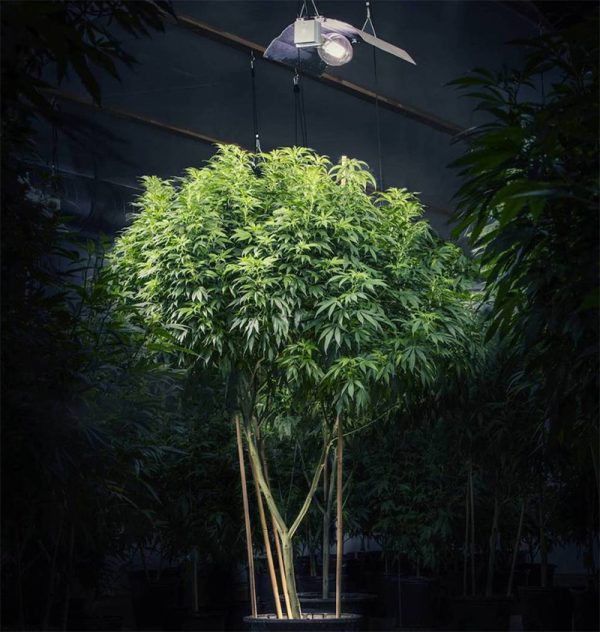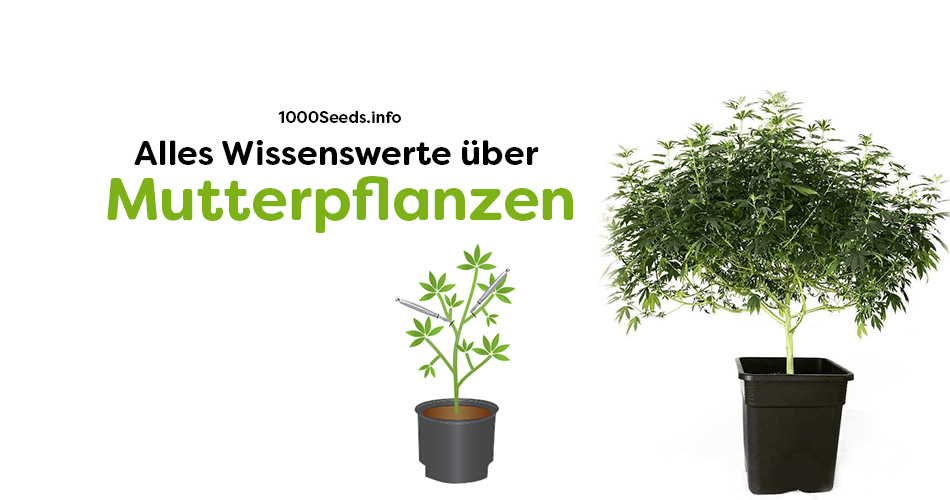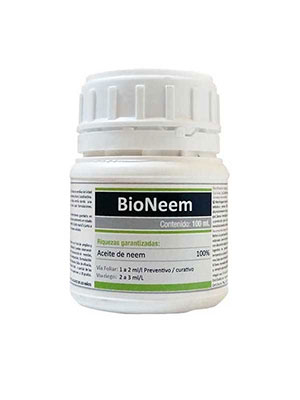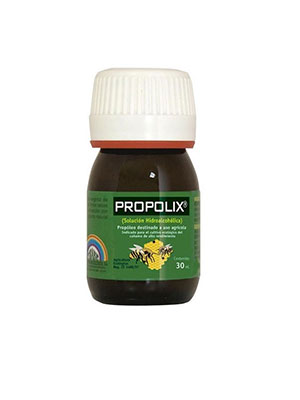Why actually mother plants?
When it comes to cannabis cultivation, mothers are particularly outstanding female plants from which clones are taken. These clones are then an identical copy of the mother plant from which they originate. Clones have the advantage that they allow a very homogeneous cultivation with exactly the same plants that need exactly the same. You can be sure what to expect, after all, you know the mother.
Mother plants are permanently in the vegetative phase. This allows for absolute consistency and a high degree of reliability and predictability. Cannabis plants grown from seed, on the other hand, have some variability in nutrient requirements, growth and other factors. A consistent flower carpet in your grow box is best achieved with clones.
From a good mother you can take clones over and over again and this over several grows. Cuttings are stronger at the beginning and easier to keep alive than seedlings. The growing process is significantly shortened because cuttings are already small plants and grow faster than seedlings do at the beginning.
How to select a mother
Clones are genetically identical to their mother. Therefore, selecting a high-quality and perfect mother plant is of great importance. It determines how all clones of this plant will turn out later. Although seed packs of cannabis strains contain the same strain, different phenotypes may come out, differing in certain characteristics. This is a normal circumstance and therefore it is especially important to find exactly the phenotype of a strain that you want and that brings the best characteristics for you.
This is how it works step by step
Step 1: Germination of regular seeds
Step 2: When the plants show their sex during the growing phase (pre-bloom!), take some clones/cuttings from each plant and mark exactly which clone comes from which plant.
Step 3: Bring the clones into flower and let them finish flowering. Leave the original plants from which you have taken the clones in the growing phase.
Step 4: When you harvest the clones, look at the aroma, the yield, the effect, the growth structure and decide which clone you like best.
Step 5: Take the original plant from which you got the clone you like the most. This is your new chosen mother plant.
Criteria for selecting a mother plant
- Aroma and the taste (terpene profile)
- Cannabinoid profile, effect, effects
- Growth structure/height
- Yield
- medicinal properties and effects
- Flowering
Care for and supply mother plants
Mother plants are illuminated for 18 hours a day and thus kept permanently in the growing phase. They should be healthy and have no pest infestation, because only then can they produce strong clones. Large and healthy mother plants can produce hundreds of cuttings within only a few months.
Many growers grow mother plants organically. This gives the plants an increased immune defence against diseases. Much more so than when grown with mineral fertilisers. And this is especially important with mother plants, because they are cultivated over a longer period of time and the risk of them being attacked by pathogens is thus increased.

It is always best to use mother plants that come directly from seed and not from the first clone of a plant. Cannabis plants that have come from seed are stronger, have stronger and bigger roots and a better immune system. Many growers think it is the best way to use regular seeds for mums. I am one of them, by the way. But of course you can also use feminised seeds to make a mother. In this case, it is less complicated because there is no need to sort out the male plants.
There are also special fertilisers designed for mother plants that help keep mother plants healthy so that vigorous cuttings can be taken.
Use especially fertilisers that contain an increased amount of calcium to help strengthen the cell walls. In addition, mother plants should receive sufficient carbohydrates. These carbohydrates, which are stored in the plant, will later help the cuttings to form their roots.
Mother plants should be carefully repotted into a larger plant pot every 5 months, as they quickly fill the existing pot with roots. This should be done up to a pot size of 20L. If the 20L pot is also overfilled with roots, the roots should be trimmed and the mother plant placed back into a smaller planter.
Pay special attention to the pH of the watering water and soil for mother plants. It is best to give mother plants their own grow tent so that you can fully cater to their needs and they are not disturbed by other plants.
Clones from mother plants should only be taken when the mother is 2 months old and has already shown her sex (i.e. was in pre-bloom). If the clone is taken before that, it may develop poorly and produce male flowers. The most resistant mother plants are produced from F1 hybrids.
As with every living being, the life cycle of a mother plant will come to an end, even if you have looked after it very well. Your cuttings will then weaken, as will they themselves. It can take 1 or 2 years, sometimes longer. But, when the time comes, it is time to choose a new mother. Old mother plants can still be made to flower very well outside or even in the grow box and produce good harvests.
These products help to keep mother plants strong and healthy for a long time:
Bio Neem: biological insect control
Propolix against pathogenic fungi and bacteria
Equipment for the cultivation of mother plants
To grow a mother plant we need the following equipment:
- A grow box: It doesn't have to be very big, unless you plan to have a lot of mother plants. A grow tent with 80 x 80cm is sufficient. If you want more genetic diversity, then of course more space is needed.
- Lighting : one ESL lamp with 200-250W or one MH lamp with 150-250W or one LED plant light. The spectrum should be designed for the growing phase.
- One fan with 200-300m³/h for air exchange, depending on the volume of the growing space
- a timer
- a thermohygrometer for checking humidity and temperature
- A small fan for air movement
Find more growing tips in our grow encyclopaedia









